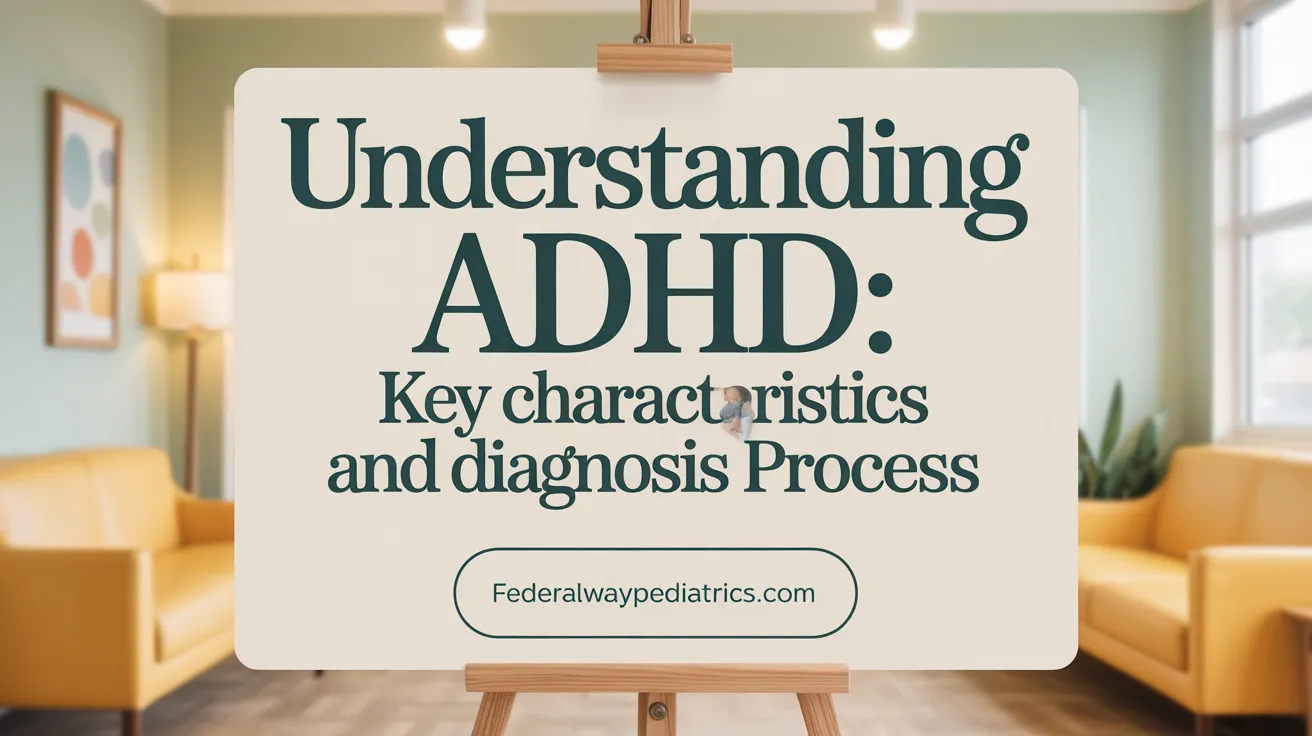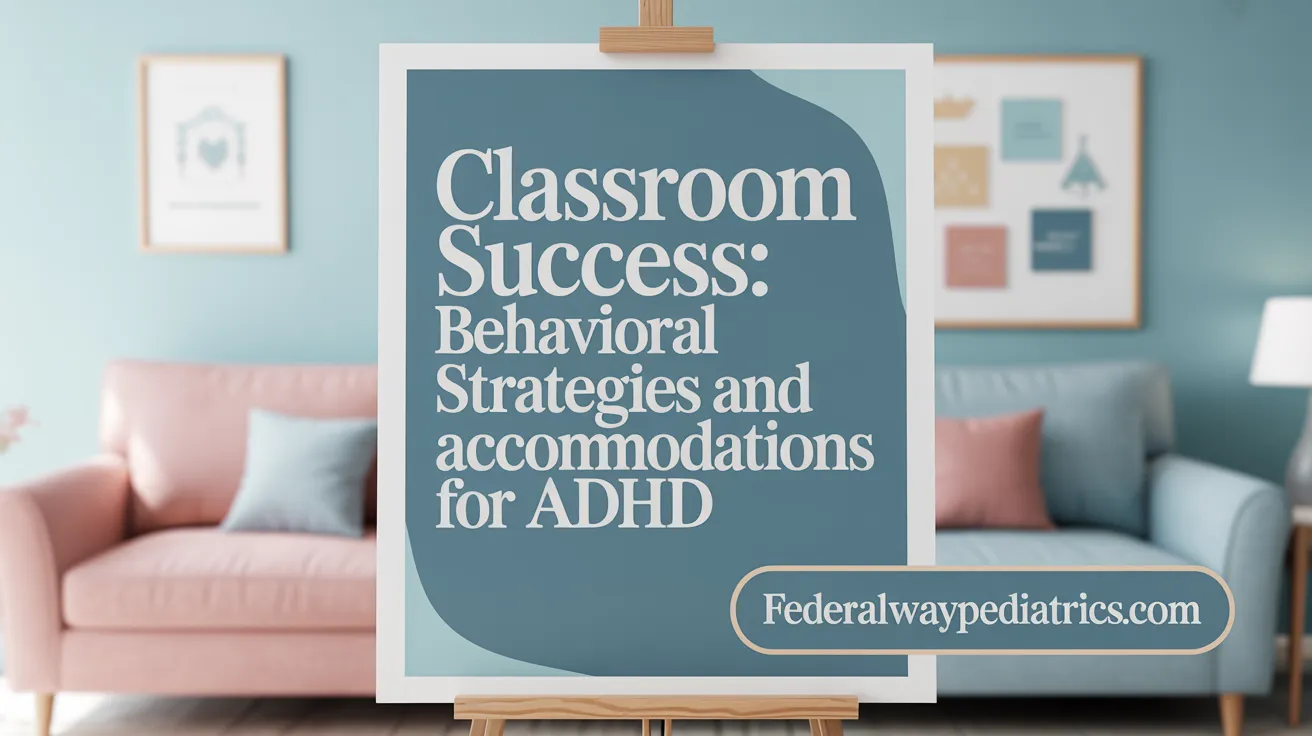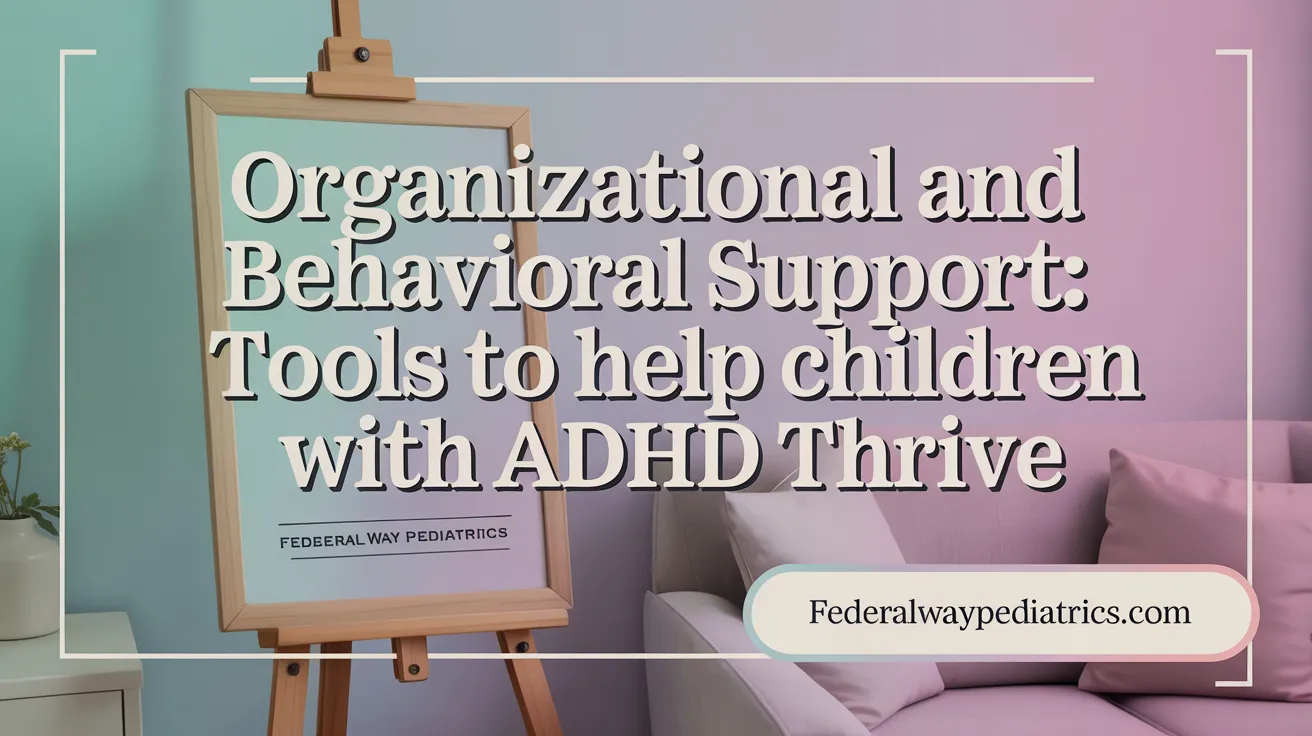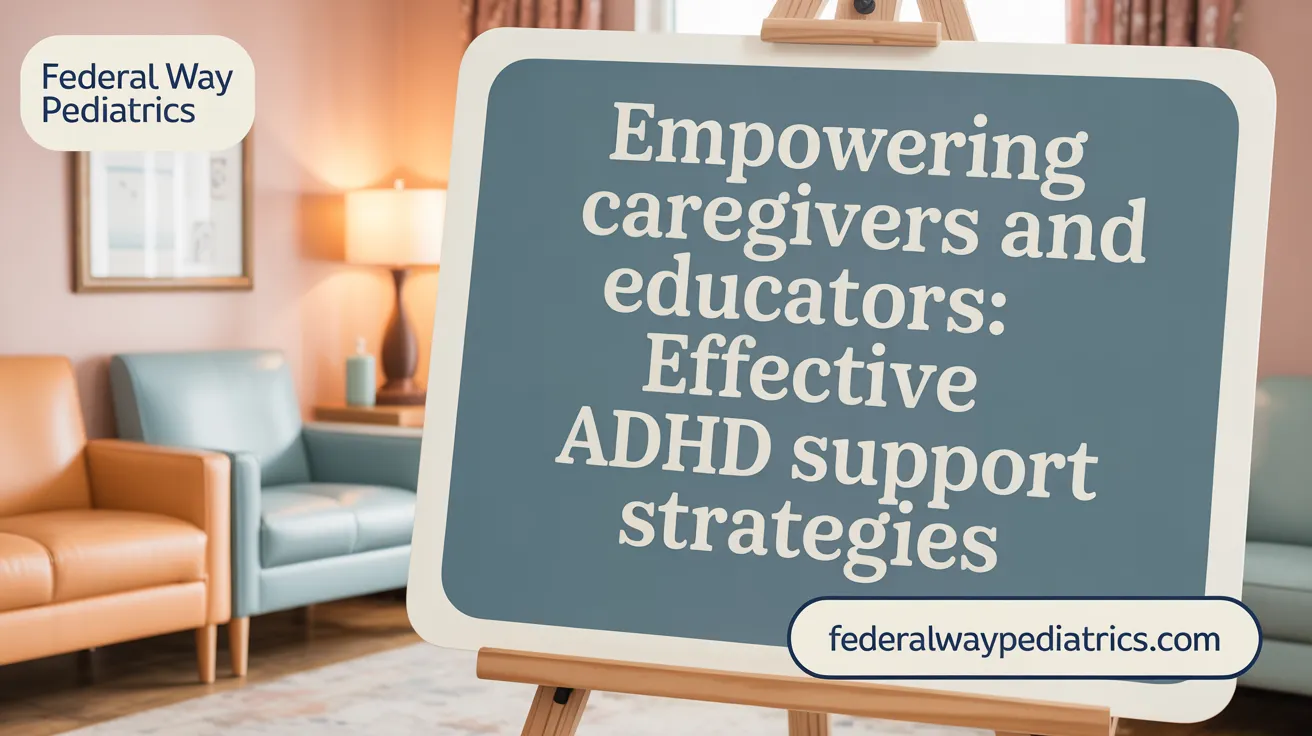Understanding ADHD and Its Impact
Attention Deficit Hyperactivity Disorder (ADHD) is a prevalent neurodevelopmental condition characterized by symptoms of inattention, hyperactivity, and impulsivity. These symptoms often present significant challenges in academic performance, social interactions, and daily functioning for children. Early recognition and diagnosis are crucial to managing ADHD effectively. This article explores effective strategies and interventions designed to support children with ADHD, aiming to empower parents, teachers, and caregivers in fostering success at school and home through evidence-based approaches and collaborative efforts.
<!-- VIDEO:eyJsaW5rIjoiaHR0cHM6Ly93d3cueW91dHViZS5jb20vd2F0Y2g/dj1pdWdJQUdqZTF5OCIsImltYWdlVXJsIjoiaHR0cHM6Ly9lbmNyeXB0ZWQtdnRibjAuZ3N0YXRpYy5jb20vdmlkZW8/cT10Ym46QU5kOUdjUkN2Q051WjVDQ1d2bWI0MlhXNDNLRkFNaFdQZ3QtVXdYQTFnIiwidGl0bGUiOiJBREhEIENsYXNzcm9vbSBTdHJhdGVnaWVzIiwic25pcHBldCI6IlRoZXJlIGFyZSBtYW55IHBvc3NpYmxlIGNsYXNzcm9vbSBzdHJhdGVnaWVzIGZvciBBREhEIHN0dWRlbnRzLiBBREhEIG9yIGF0dGVudGlvbiBkZWZpY2l0IGh5cGVyYWN0aXZpdHkgZGlzb3JkZXIgY2FuIGRpc3J1cHQgdGhlIGNsYXNzcm9vbcKgLi4uIn0= -->Defining ADHD: Characteristics and Diagnosis

What are the key characteristics of ADHD, and how is it diagnosed?
ADHD, or Attention-Deficit/Hyperactivity Disorder, is a neurodevelopmental condition marked by ongoing patterns of inattention, hyperactivity, and impulsivity. Children and adults with ADHD often struggle with maintaining focus, controlling impulses, and managing excessive activity levels. These symptoms can interfere significantly with everyday life, affecting academic performance, social relationships, and emotional wellbeing.
ADHD manifests in three primary subtypes:
- Inattentive type: Characterized mainly by difficulty sustaining attention, forgetfulness, and disorganization.
- Hyperactive/Impulsive type: Features include excessive fidgeting, talking, and acting without thinking.
- Combined type: A mix of inattentive and hyperactive/impulsive symptoms, and the most common form.
Diagnosing ADHD involves a comprehensive process aligned with criteria from the DSM-5. Healthcare professionals look for symptoms that have persisted for at least six months, began before age 12, and are evident in at least two settings like school and home. The assessment includes detailed behavioral evaluations, clinician interviews, behavior rating scales filled out by parents and teachers, and a thorough review to exclude other medical or psychiatric causes. Although no laboratory tests can diagnose ADHD, this thorough evaluation helps distinguish it from other conditions and guides effective treatment planning.
Early diagnosis is crucial. Identifying symptoms promptly allows for interventions that improve coping skills, reduce impairments, and support better outcomes across academic, social, and emotional domains. Recognizing the key features of ADHD and understanding the diagnostic process ensures children and adults can receive appropriate support and achieve their full potential.Diagnosis and Treatment of ADHD - Mayo Clinic
Educational and Legal Rights for Children with ADHD
What legal frameworks and educational rights exist to support children with ADHD?
Legal protections such as the Individuals with Disabilities Education Act (IDEA Rights for Children with ADHD) and Section 504 of the Rehabilitation Act are crucial in ensuring children with ADHD receive the support they need in school. IDEA specifically provides for the creation of an Individualized Education Program (IEP for children with ADHD) for eligible students, which is a tailored plan that includes specific educational goals, services, and behavioral supports designed to meet the child's unique needs. This may encompass accommodations like additional time on tests, specialized instruction, and behavioral interventions.
Section 504 offers protections for students with disabilities who do not qualify for IDEA but still require accommodations to access the general education curriculum. A Section 504 plan (Section 504 Plans for ADHD Accommodations) can include adjustments such as preferential seating, extended test-taking time, frequent breaks, organizational support, and behavioral supports.
Both laws mandate that schools evaluate students at no cost to determine eligibility and involve parents in the planning process. Schools are required to collaborate with parents, teachers, and specialists to develop and implement these support plans (Collaboration Between Teachers, Parents, and Healthcare Providers). The overall goal of these legal rights is to enable children with ADHD to participate fully and successfully in their educational environment, with supports that allow them to learn and grow alongside their peers within the least restrictive environment (Legal Rights for Parents of Children with ADHD).
Behavioral and Classroom Management Strategies

What classroom management approaches, accommodations, and behavioral support strategies help children with ADHD succeed academically?
Supporting children with ADHD effectively involves a combination of classroom management techniques, accommodations, and behavioral strategies tailored to their unique needs.
One of the most effective approaches is establishing clear, consistent routines and rules that provide stability and predictability. Using visual schedules, checklists, or color-coded organizers helps students understand expectations and manage their time better.
Providing immediate positive reinforcement, such as praise, reward charts, or daily report cards, encourages desirable behaviors and increases student engagement. These reward systems motivate children to stay focused and improve social skills.
In addition to behavioral strategies, accommodations play a vital role. These can include extra time on tests, preferential seating near the teacher or away from distractions, scheduled breaks to reduce fatigue, assistive technology, and organizational supports like planners or folders.
Minimizing distractions through environmental modifications—such as seating arrangements, noise control, and clutter reduction—helps students stay attentive. Allowing movement and incorporating physical activity into the routine can also alleviate hyperactivity and improve focus.
Clear, concise instructions are essential. Breaking complex tasks into smaller steps, repeating instructions, and checking for understanding ensures that children grasp what is expected.
Positive discipline practices, combined with ongoing collaboration among teachers, parents, and healthcare providers, foster a supportive environment. Consistent consequences for negative behaviors and recognition of positive efforts build self-control and confidence.
Overall, these integrated strategies create an environment conducive to learning, promoting academic success and social-emotional development for children with ADHD.
Implementing Behavioral Management and Organizational Support
 Supporting children with ADHD requires a comprehensive approach that combines behavioral management techniques with effective organizational strategies. Schools and parents can foster positive behaviors by implementing systems of positive reinforcement, such as praise for good behavior, daily report cards, and clear, consistent discipline. These methods help children understand expectations and develop self-regulation skills.
Supporting children with ADHD requires a comprehensive approach that combines behavioral management techniques with effective organizational strategies. Schools and parents can foster positive behaviors by implementing systems of positive reinforcement, such as praise for good behavior, daily report cards, and clear, consistent discipline. These methods help children understand expectations and develop self-regulation skills.
Parental involvement and collaboration with educators and healthcare providers are fundamental. Regular communication about behavioral progress, academic performance, and routines ensures consistent support across settings. Parents can advocate for accommodations like extra time on tests, tailored instructions, and environmental modifications to reduce distractions.
Teaching essential time management and planning skills is crucial. Children should learn to develop routines for homework and chores, use visual calendars, and break tasks into manageable steps. Organizational tools like planners, checklists, and color-coded folders support independence and task completion.
Organizational Skills Training (OST) has proven effective in improving attention and organizational abilities. OST involves teaching children how to manage materials, plan ahead, and prioritize tasks, leading to enhancements in academic performance and social functioning. When combined with structured routines, OST helps children become more autonomous in managing their daily responsibilities.
Implementing these strategies involves patience and ongoing effort from parents, teachers, and healthcare providers. Tailored interventions that include behavior reinforcement, structured routines, and organizational support have shown to significantly improve classroom engagement, reduce frustration, and promote better psychosocial outcomes for children with ADHD. By creating an environment that promotes routine, predictability, and support, children can develop skills that foster success in both academic and social domains.
Evidence-Based Treatment Options and Therapies
Children with ADHD can greatly benefit from a variety of evidence-based interventions that focus on both medication and behavioral strategies. The most supported pharmacological treatments are stimulant medications such as methylphenidate and amphetamines. These medications are highly effective, helping to control symptoms like inattentiveness, impulsivity, and hyperactivity in about 70-80% of children. Non-stimulant options, including drugs like atomoxetine and guanfacine, provide alternatives for children who may not tolerate stimulants or when specific medical considerations exist (ADHD treatment options, ADHD diagnosis and treatment, Treatment of ADHD).
Alongside medication, behavioral therapy plays a crucial role. Parent training programs teach families effective ways to reinforce positive behaviors and manage challenging ones through structured routines, consistent discipline, and reward systems (Parent training for ADHD, Parenting a Child With ADHD, Behavioral parent training for ADHD). Behavioral interventions in the classroom, such as daily report cards and organizational supports, further support children's learning and self-control (Behavioral classroom management for ADHD, Organizational training for children with ADHD, Classroom interventions for ADHD). For older children and adolescents, cognitive-behavioral therapy (CBT) is recommended to improve attention, emotion regulation, and social skills (Behavioral interventions for ADHD). Social skills training and organizational coaching help children develop practical strategies to manage daily responsibilities (Strategies for Supporting Children with ADHD).
A comprehensive, multimodal approach that combines medication, behavioral therapies, and educational accommodations offers the best outcomes (Multimodal treatment approach for ADHD). Regular monitoring by healthcare providers ensures that treatment plans are adjusted for maximum benefit (Monitoring ADHD medication). Effective collaboration among families, schools, and health professionals is essential for implementing these evidence-based practices successfully (Collaboration Between Teachers, Parents, and Healthcare Providers, Parenting a Child With ADHD). Overall, integrating these interventions provides children with ADHD the tools they need to succeed academically, socially, and at home (ADHD Treatments and Special Education Services, Strategies for Supporting Children with ADHD).
Supporting Academic and Social Success in Children with ADHD
Children with ADHD can face significant hurdles in academic and social settings, but with tailored strategies and collaborative support, they can thrive.
A comprehensive approach is essential, one that combines appropriate classroom accommodations with behavioral management techniques. Schools may provide extra time on tests, visual aids, organizational tools, and assistive technology, all aimed at reducing distractions and helping children manage their responsibilities effectively. Implementing classroom strategies such as structured routines, clear instructions, and opportunities for movement can foster engagement and reduce frustration.
Positive reinforcement plays a crucial role in encouraging desired behaviors. Reward systems like token economies and frequent praise can boost self-esteem and motivate children to meet behavioral and academic goals. Scheduling regular breaks, especially physical activity, helps in managing impulsivity and overactivity, supporting better concentration and emotional regulation.
Building social skills is vital for improving peer relationships. Activities like small group interactions, social skills training, and teaching children appropriate responses to provocation help in developing empathy and cooperation. These interventions foster smoother social interactions and reduce feelings of isolation.
A key element is collaboration among parents, educators, and healthcare providers. Regular communication through meetings, progress reports, and shared goals ensures a consistent support network. Creating individualized support plans through legal frameworks such as Individualized Education Programs (IEPs) or 504 Plans allows for tailored interventions suited to each child's unique needs.
Involving families in school-based programs and psychosocial interventions further enhances motivation and emotional resilience. Such holistic support environments help children build confidence, develop self-regulation skills, and succeed academically and socially, laying a foundation for long-term growth and well-being.
Educating Parents, Teachers, and Caregivers on ADHD Management
 Providing effective education on ADHD support strategies and management strategies is crucial for parents, teachers, and caregivers. A comprehensive approach involves offering workshops, training sessions, and easily accessible informational resources that clearly explain ADHD characteristics, behavioral management techniques, and communication strategies. Schools can implement behavioral classroom management plans, including the use of reward systems like daily report cards, and organizational training to teach time management and planning skills. These measures are often incorporated into Individualized Education Programs (IEPs) or 504 Plans, which provide tailored accommodations such as extra time on tests, environmental adjustments, and organizational tools.
Providing effective education on ADHD support strategies and management strategies is crucial for parents, teachers, and caregivers. A comprehensive approach involves offering workshops, training sessions, and easily accessible informational resources that clearly explain ADHD characteristics, behavioral management techniques, and communication strategies. Schools can implement behavioral classroom management plans, including the use of reward systems like daily report cards, and organizational training to teach time management and planning skills. These measures are often incorporated into Individualized Education Programs (IEPs) or 504 Plans, which provide tailored accommodations such as extra time on tests, environmental adjustments, and organizational tools.
Parent and caregiver education should focus on the importance of positive reinforcement, consistent discipline, and establishing routines that help children regulate emotions and behaviors. Encouraging collaboration among families, educators, and healthcare professionals creates a supportive environment for the child. Support groups and behavioral parent training programs provide additional resources, offering practical advice aligned with cultural sensitivities to ensure understanding and adherence.
Furthermore, implementing culturally sensitive educational materials and testing tailored resources based on feedback from caregivers and schools fosters scalable and effective support systems. These strategies enhance caregivers' and teachers' ability to manage ADHD effectively and empower everyone involved in the child's care and education, ultimately promoting better outcomes for children with ADHD.
Practical Tips and Resources for Managing ADHD Symptoms at Home and School
Managing ADHD effectively requires a combination of practical strategies and supported resources both at home and in school settings. One of the most fundamental approaches is establishing consistent routines and maintaining organized environments. Using visual aids like charts, checklists, and timers can help children understand expectations and manage their time better. For instance, color-coded schedules and visual timers make transitions smoother and help children anticipate upcoming activities.
Incorporating physical activity into daily routines is another essential tip. Outdoor exercises, sports, and brief movement breaks during study sessions can reduce hyperactivity and improve focus. Complementing physical activity with healthy habits such as balanced nutrition and good sleep routines further supports emotional stability and concentration. For more on managing physical activity and healthy routines, see managing ADHD in children.
Effective communication tools like daily report books or electronic communication apps facilitate regular updates between parents and teachers. These tools help ensure consistency in behavioral expectations and provide immediate feedback on progress or concerns. Guidance on this can be found in ways to help children with ADHD at school and home.
Leveraging community resources and support programs can significantly aid both children and adults with ADHD. Support groups, such as those offered by CHADD, offer valuable information, emotional support, and shared experiences. Educational workshops on behavioral management, organizational strategies, and the use of assistive technology empower families and educators to implement effective interventions. Information on behavioral interventions is detailed in behavior management treatments for ADHD.
In school, accommodations like extra time on tests, tailored instructions, and structured environments are vital. Breaking tasks into manageable parts and using visual prompts help children stay on track. At home, creating a clutter-free workspace and giving clear, simple instructions foster better engagement. For detailed strategies, see ADHD in the Classroom and classroom interventions for ADHD.
Finally, consistency in reinforcing positive behaviors, recognizing achievements, and providing tailored supports can create a conducive environment for children with ADHD to thrive. Integrating these strategies and utilizing available resources make a meaningful difference in daily functioning and long-term success. For additional practical parenting tips, refer to Parenting a Child With ADHD and 10 Tips for Supporting a Child With ADHD.
Fostering Success Through Informed Support and Collaboration
Effectively supporting children with ADHD requires a multifaceted approach that integrates early diagnosis, evidence-based treatments, behavioral and organizational strategies, and educational accommodations. Central to success is the collaboration among parents, educators, and healthcare professionals, ensuring consistent and tailored support across settings. Empowering caregivers and teachers through education and resources enhances the quality of interventions and fosters positive outcomes. By combining structured routines, individualized accommodations, positive discipline, and active communication, children with ADHD can overcome challenges and thrive academically, socially, and emotionally. Ongoing advocacy and informed involvement remain critical to maximizing these children's potential and quality of life.
